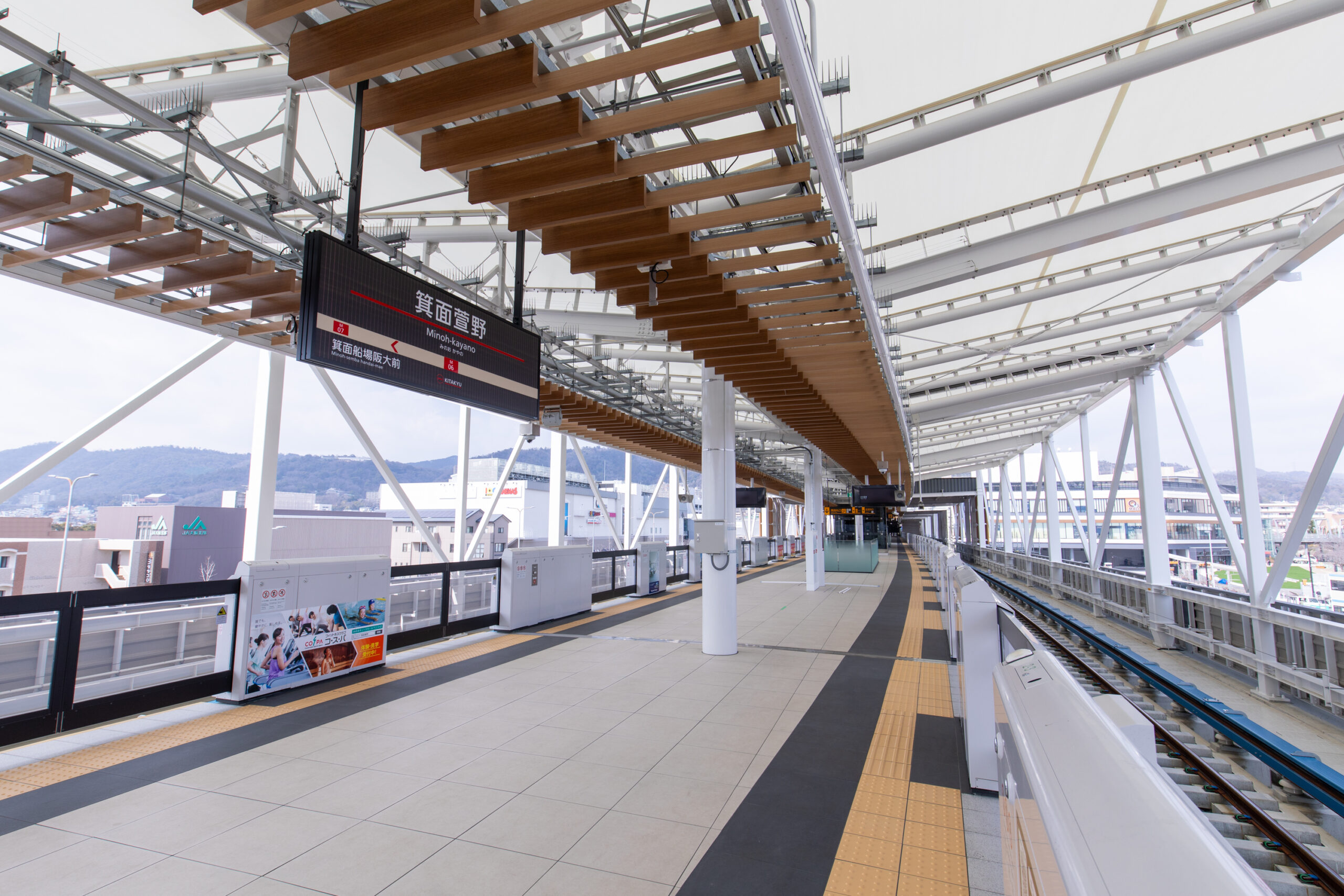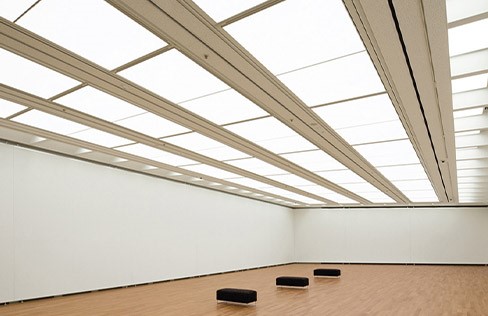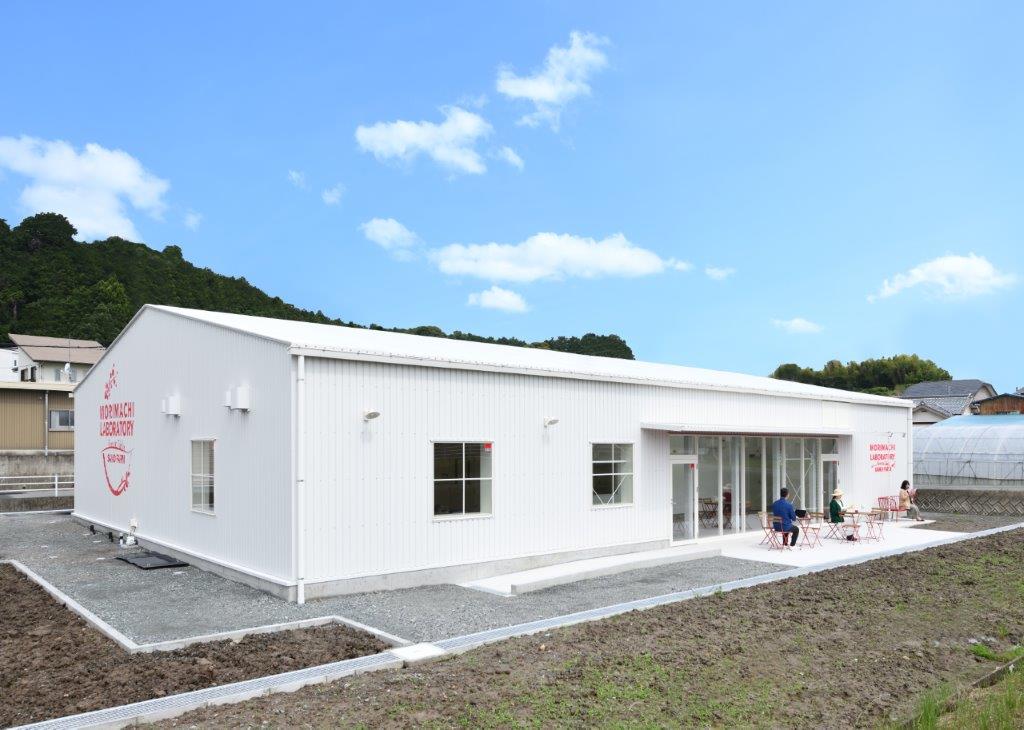

Taiyo Kogyo Column
Grading of ETFE structures and large-scale relocated buildings, two themes that will open up a new era for membrane structures.
2024.03.13
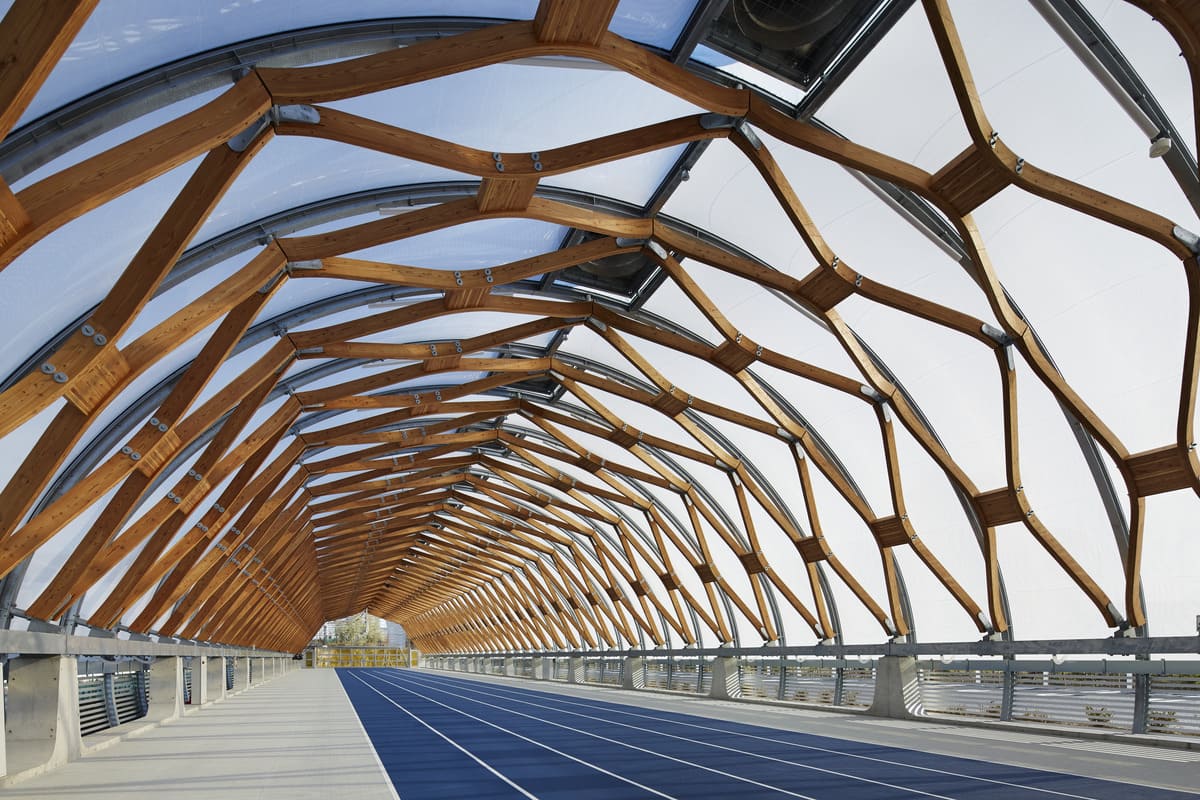
The Shin Toyosu Brillia Running Stadium opened in 2016 in Toyosu, Koto-ku, Tokyo, as a place where sports lovers, including citizen runners, people with disabilities, and top athletes, can share the joy of running together.
The stadium, which has been loved by many users for the past seven years, is currently undergoing demolition and relocation work with the aim of moving it to the Ariake area.
We talk to Jun Kitamura (hereafter “Kitamura”), who took on the challenge of using ETFE structures on a large scale for the first time in Japan through stadium construction and obtaining a rating for notification, and designing a building for demolition and relocation without using any on-site steel frame welding or membrane welding work.
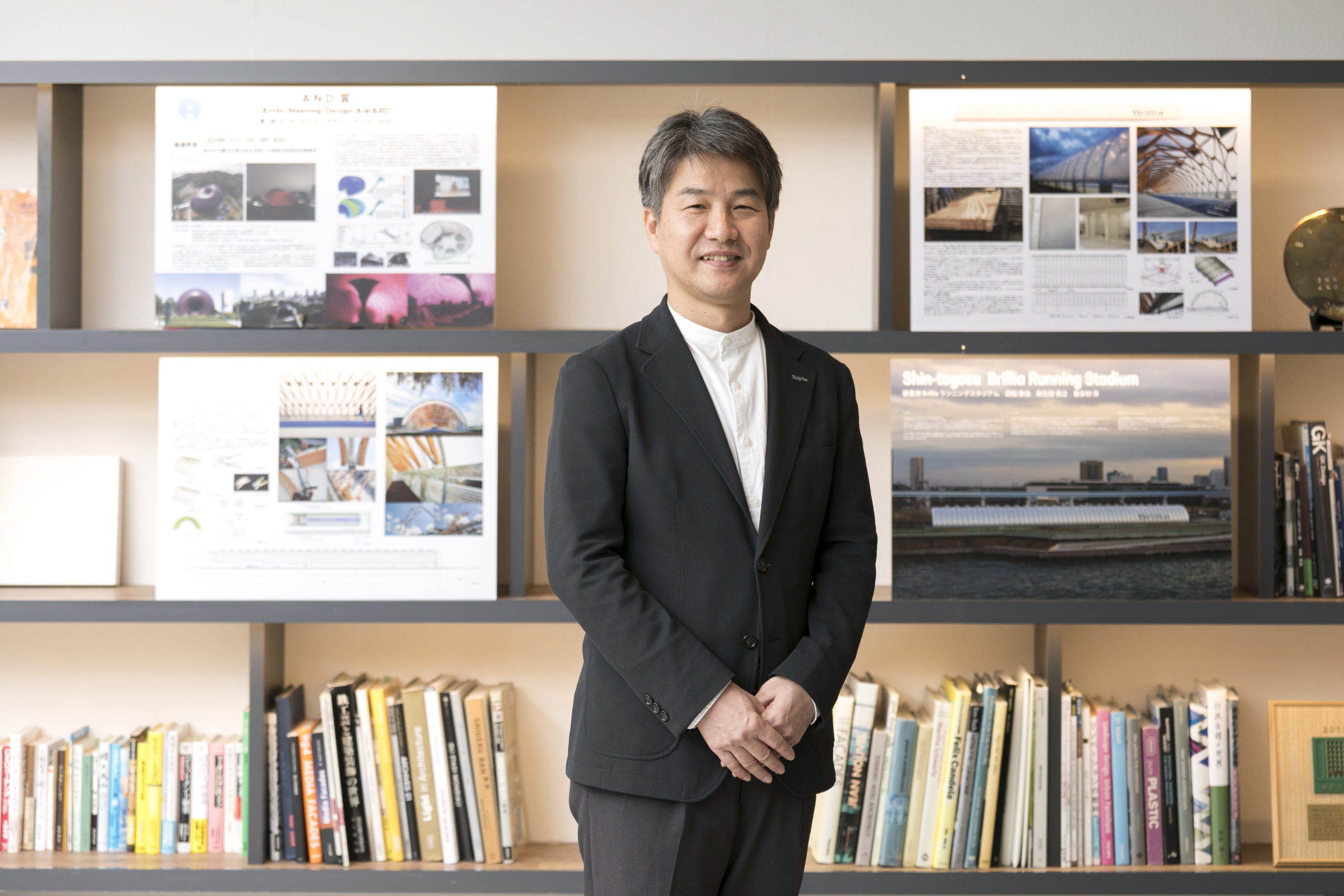
Jun Kitamura
Construction Business Headquarters Joined in 1996
Encounter with Membrane Structures and the Impact of Munich
Membrane Attraction that Led Kitamura to ETFE Structure
Kitamura, who currently holds the title of Principal Engineer of the Construction Business Management Division and Director of Planning and Research of the Japan Membrane Structures Association, is a standard-bearer of ETFE structures. How was the ETFE structure installed in the Shin-Toyosu Brillia Running Stadium, and what was his first encounter with membrane structures?
Kitamura:
Since my college days, I have been a member of the membrane structure laboratory in the architecture department. When I was a high school baseball fanatic, the Korakuen Stadium became the Tokyo Dome, and when I went to see a game, I was fascinated by the mysterious roof structure, which is how I became interested in membrane structures. After I started studying in earnest, I was shocked by the Olympic Stadium in Munich, which was designed by a famous engineer named Frei Otto in 1972. Although not a membrane, it was shaped like a membrane structure using transparent materials and thick cables, and was just amazing in scale. I am currently the secretary of the Structural Design Subcommittee of the Shell and Space Structure Steering Committee of the Architectural Institute of Japan, and I wrote about this work in the book “Structural Design Guidebook of the World I,” which was published there in 2019. Similarly, I am of course writing about the Shin Toyosu Brillia Running Stadium in the “Structural Design Guidebook for Japan” published in 2023.
I joined Taiyo Kogyo in 1996 and began researching ETFE structures in the early 2000s in the company’s technical research laboratory. My first impression when I saw it for the first time was that the material was highly transparent and, in any case, flimsy. Frankly speaking, I wondered if such a material would be okay. I wondered. The first project I was deeply involved in was the Japan Pavilion at the 2010 Shanghai Expo, an international exposition held in Shanghai, China. The roof was an ETFE structure, and I was in charge of its design. At that time, I was also working with Mr. Shinji Namba and Mr. Ken Takai, who worked with me on this project.
Conventional membrane structures have used white membranes, but the greatest advantage of the ETFE structure is that it can be transparent. Because it allows ultraviolet rays to pass through, it is also suitable for greenhouses and botanical gardens where plants are grown, and for soccer stadiums where natural turf needs to be cultivated. On the other hand, the disadvantage is that the temperature rises too much when sunlight enters and heat builds up. Not everything can be made of ETFE structure. Considering the application and environment, white membrane is better in some cases. Also, ETFE can be printed to adjust its transmittance. We are a membrane construction company, so we have a wider range of materials to choose from, depending on the application. I think it is a material with great potential.
ETFE structure that Kitamura felt had great potential.
The Shin Toyosu Brillia Running Stadium is a good starting point,
To make it legal so that this material can be introduced domestically.
Kitamura:
I think it was 2015 when I first heard about the Shin Toyosu Brillia Running Stadium. Initially, it was to be a training facility for Paralympians, and at a meeting called the Toyosu Conference of local experts, we voiced our desire to make effective use of the land owned by Tokyo Gas in preparation for the Tokyo Olympics. Ultimately, the plan was to create a running facility where anyone could enjoy sports, and the plan for a facility headed by Dai Tamesue, a former track and field athlete and three-time Olympic team member, was decided upon.
The initial design was commissioned to Mr. Koji Takematsu of E.P.A Environmental Conversion Equipment. Mr. Takematsu had built a temporary building in 2005 with Mr. Namba of Taiyo Kogyo using an ETFE structure, albeit on a small scale, and came to Mr. Namba for consultation with the idea of using an ETFE structure first this time as well.
As I mentioned earlier, ETFE structures have been studied as a technology for about 20 years, and although there have been many significant achievements in other countries, it has been impossible to introduce ETFE structures in Japan due to laws and regulations. The process of changing the law is quite difficult, and the Shin Toyosu Brillia Running Stadium was a possible starting point for this process.
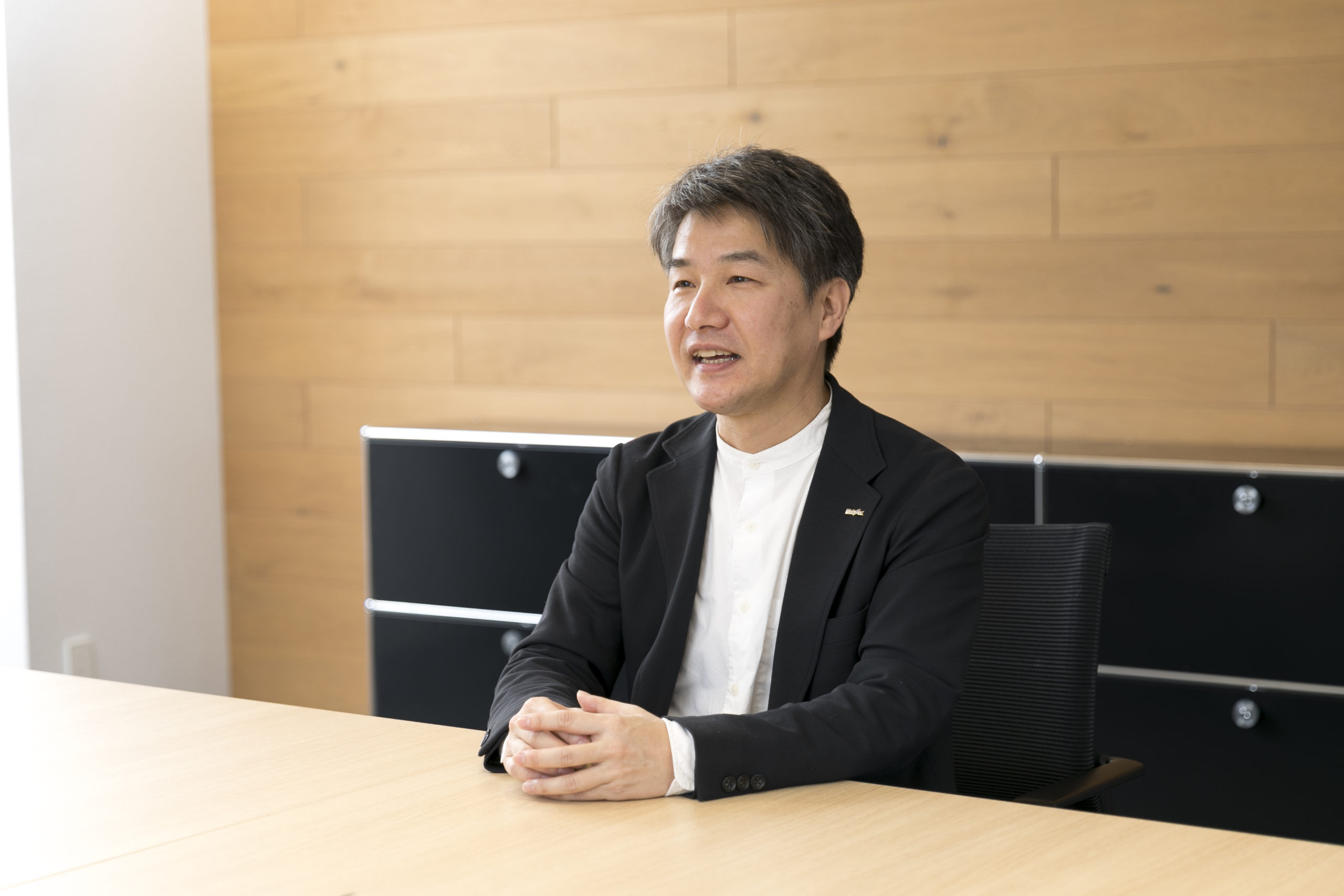
Construction schedule, cost, design, and grading for legal changes
The power to push us over every hurdle.
Kitamura began work on the design with a number of propositions in mind.
Can ETFE structures be graded for legalization as a result of this construction?
With a gentle smile on his face, Kitamura honestly shares his feelings.
Kitamura:
Having experienced several ETFE projects, including the Japanese Pavilion at Expo 2010 Shanghai China, we were not worried that we would be able to handle the project technically. However, since the construction period was short, we were concerned that it might be a bit difficult considering the time it would take to receive the evaluation for legalization.
The other is the design aspect. It was right around this time that Zaha Hadid’s design for the New National Stadium was adopted, and there were plans to use the ETFE structure there, but it was right after Zaha’s proposal was withdrawn. This meant that design aesthetics would become even more important, and it would not be like building a warehouse or plastic greenhouse. The membrane structure is finished as it is, so all the bones of the structure are visible, so based on architect Takematsu’s design, we, Hideyuki Hagiuda of KAP Corporation, the structural engineer, and Taiyo Kogyo, including PM Namba, site manager Takai, and myself, discussed the beauty that only an ETFE structure can provide. We discussed the beauty of the ETFE structure with Mr. Hideyuki Hagiuda of KAP Co. We discussed everything from the form of the structure to the details of the joints with the wood and the appearance of the hose for the ETFE ventilation system, and even conducted mock-up verification to reduce the slightest wrinkle in the ETFE. I am truly grateful that we were able to work together with everyone, while keeping an eye on the construction period and cost, with the same goal of creating a design worthy of Japan’s first ETFE structural architecture.
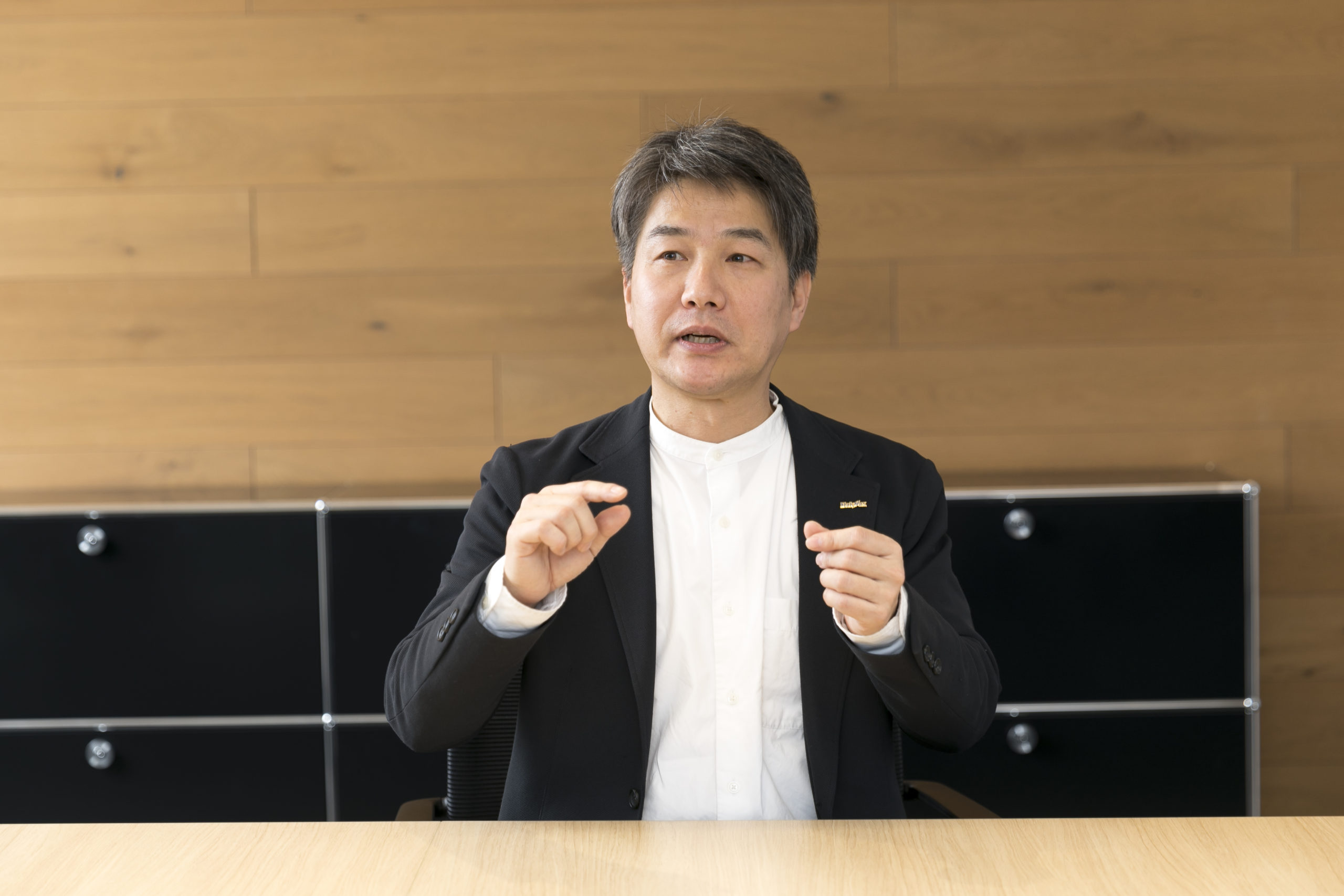
Through the design and construction of the Shin Toyosu Brillia Running Stadium,
The major task that Kitamura took on was to get the ETFE structure graded for legalization.
It continues from the merits of grading to unexpected developments.
Kitamura:
One of the advantages of having ETFE structures graded is that the law can be revised and placed on the public notice. Until now, ETFE structures could be used if they were graded, but since no one has been grading them, they have not been used and the law has not been changed. If we could receive the evaluation this time, even if it was difficult, and if it was recognized as an achievement and notified, we would be able to introduce ETFE structures in the future without having to receive the evaluation, which would greatly expand the potential of ETFE structures. This was something we wanted to accomplish.
However, during the design process, the government decided that we could proceed without a rating. In other words, they decided that since the ETFE structure would be treated as a roofing material rather than a membrane structure, no evaluation was required.
Certainly, there is an advantage in that the construction period can be accelerated if the project is not graded. If you look at the project as a whole, the advantage of the construction period is significant, and there was a time when I myself was almost carried away by that idea.
However, when I went back to the company and reported this to then Executive Director Taku Nomura, he told me, “Don’t take the easy way out! If we received a rating and achieved results, it would lead to a revision of the law.” We decided to voluntarily receive a BCJ rating from the Building Center of Japan (BCCJ) as an equivalent to treating the ETFE structure as a membrane structure, although it is legally treated as a roofing material. The BCJ evaluation is an evaluation of a building’s construction methods and materials in light of building codes and ordinances, and the results are highly evaluated by administrative agencies and other authorities as technical evidence.
Although the design construction period took a reasonably long time, I feel grateful for Executive Director Nomura’s words, as they were later treated as a proud achievement and the law was revised. Without those words, I do not think I would have received the various awards I later received, and I think my current position would have been different if that had been the case. Although about 15 years behind Europe and other countries, ETFE has finally become possible in Japan, creating an environment in which we can catch up with foreign countries in terms of the legal system.
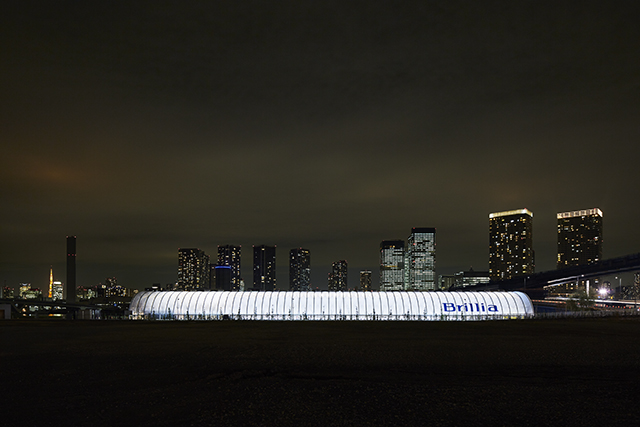
When asked about Mr. Nohimura, the executive director who issued the proclamation, Kitamura mentioned the name of another employee, along with his respect for Mr. Nohimura.
The conversation also extends to Taiyo Kogyo’s flat corporate culture.
Kitamura:
Mr. Taku Nomura is a pioneer and a senior member in the field of membrane structures in general. He has been telling me for more than 20 years that ETFE structures should be included in the law, so he has much more insight and commitment than I do.
Another person who gave me a boost about the grading of the ETFE structure was Keiji Mori, who was then the head of the sales section in Kyushu. He was in charge of the “Oshima Hospital Porte Cocoon Building” in Saga Prefecture, which used the ETFE structure, and although the government had told him that he did not have to accept the grade because the entrance canopy was only 70 square meters, he brought it to me because he thought we needed to establish a track record, and we both received the We both received a grade.
I have little contact with Mr. Nomura, who is indeed my senior, but Mr. Mori is about two years my senior. He is currently the Chugoku Branch Manager, and we keep in touch and have dinner together whenever I visit Hiroshima. It must be some kind of coincidence that Mr. Mori is the person in charge of the first ETFE roof in Japan for the new soccer stadium in Hiroshima. Sales staff from all over Japan frequently ask me to come over here for technical consultation on ETFE structures and other technical matters, and we continue to deepen our friendship after work. Recently, younger junior staff members have been increasing in number, which is encouraging, but I hope that the corporate culture of Taiyo Kogyo will continue to be valued for its flexible and flexible approach to friendship.
I would also like young people, not only sales people but also technical people, to actively go out and meet various people and broaden their insight. I would like to give advice on technical and legal matters, of course, but I would also like to work with young people on new challenges, new relationships, and anything else that I can help them with. I would like them to experience the excitement of wondering how they can do it, and the sense of accomplishment when they do it.
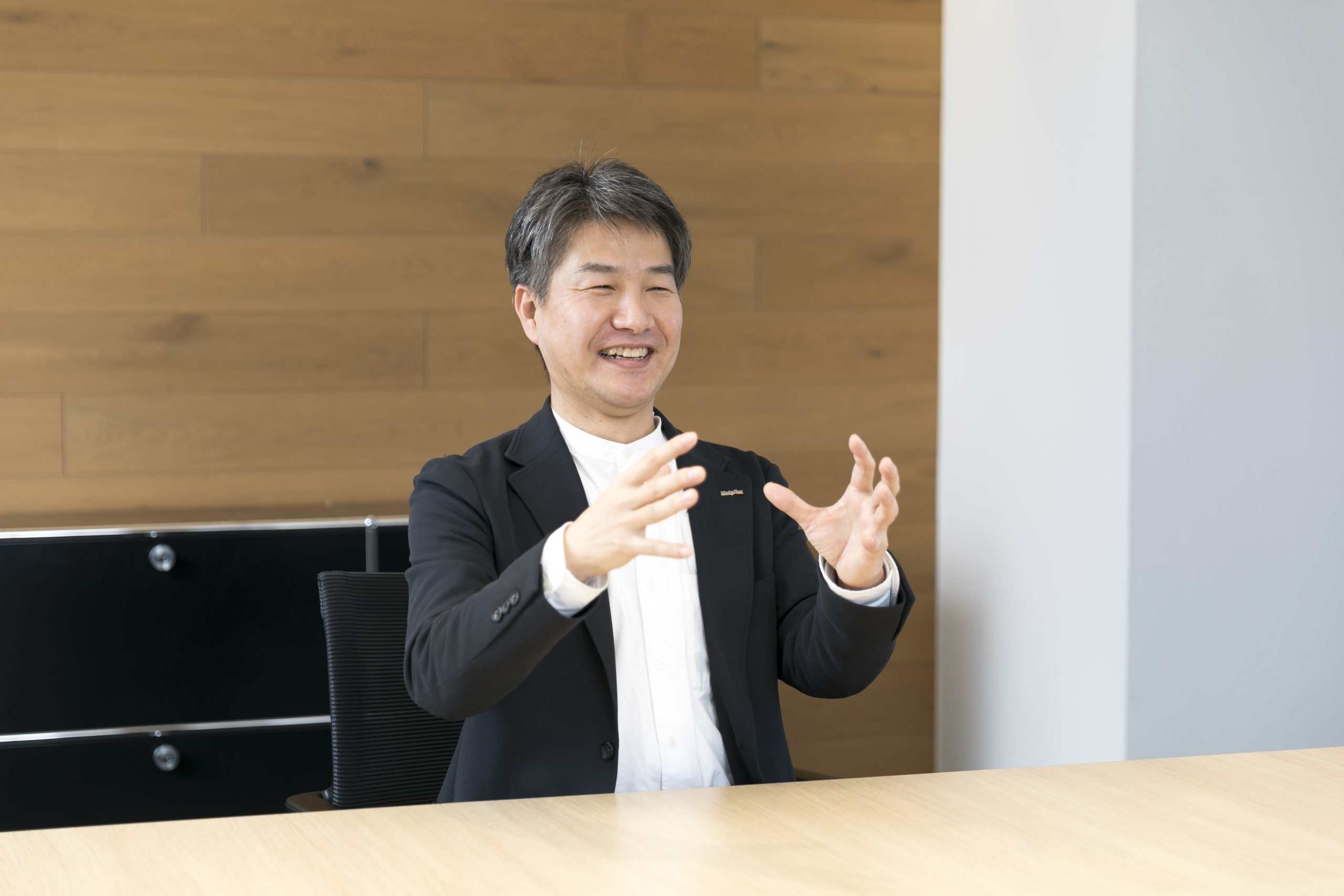
Specialized demolition and reassembly methods are used
The future of transferable construction to take advantage of the useful life of building components
With the support of internal and external staff, construction of the new Toyosu Brillia Running Stadium is underway, accompanied by an ETFE structural evaluation.
We then talked about another feature, relocatable architecture, and asked about the overview, benefits, and legal issues of this new feature.
Kitamura:
The Shin-Toyosu Brillia Running Stadium was built on the premise that after a certain period of use, it can be dismantled and transported to a new location for reassembly. Therefore, the stadium was designed so that it can be disassembled by simply removing bolts and other parts, eliminating any on-site welding of the steel frame and membrane. Although the building was designed to be relocated, it was initially difficult to find a site for relocation, and we are very happy that TSP Taiyo, a group company, decided to relocate the building to Ariake as a member of the project.
The greatest advantage of transferable construction is that it is superior in terms of both construction period and cost, as there is no need to fabricate new components. The life of building materials is long, and in the case of ETFE structures, they can be used for 30 years or more, so it would be a waste to dispose of them after only 7 years or so. After 7 years of use on Toyosu, the building will be moved to Ariake and operated for 10 years, which is very much in line with the times in terms of not wasting building materials.
The idea of utilizing materials without discarding them is also applicable to temporary construction. I once worked on the structural design of a work called “Arc Nova. Arc Nova was conceived by architect Arata Isozaki and European architect Anish Kapoor after the Great East Japan Earthquake in 2011, and completed in 2013 under the design of Isozaki Aoki & Associates. Since 2013, it has been used four times in different areas. I was most impressed with this piece when it was completed, and in fact, I worked with Mr. Namba on this one as well.
However, the current law for temporary buildings limits their use to one year or less for events, etc. If they are to be used continuously for two or three years, the same regulations as permanent buildings are required. This makes it difficult for membrane structures to be used for events. If the law can be amended in the future to allow the use of membrane structures such as ETFE for events in the category of short-term construction, I believe that demand will increase even more.

Highly acclaimed and noted, including the Japan Structural Design Award,
ETFE Structural Grading brings significant advances to membrane construction
The first large-scale ETFE structure in Japan. The Shin Toyosu Brillia Running Stadium is a relocatable building that introduces a hybrid structure of curved laminated wood and steel arches.
The project received high acclaim with numerous internal and external awards, including the Japan Structural Design Award 2017, Good Design Award 2017, BCS Award 2018, and the Architectural Institute of Japan Award 2019.
Kitamura:
The attention to the Shin Toyosu Brillia Running Stadium has been greater than expected, and I have explained ETFE and this facility to a total of about 5,000 people over the past seven years, including about 2,000 people who gathered for the completion ceremony. I have explained ETFE and the facility to a wide range of people, from design firms, general contractors, government officials, and local governments to university laboratories and academic societies, etc. In 2016, many people who came to Japan to attend the IASS (international association for shell and spatial structure) conference also came to see the facility and I explained it to them. and gave them explanations of the project.
Although there has not been an explosion of orders for ETFE structures, the number of internal orders has been steadily increasing, and we have many times more opportunities to go to customers to explain the structure to them. We have also been selected for a soccer stadium. It is difficult to simply use the word “deregulation,” but I would like to continue my efforts to create a legal framework and environment that allows ETFE to be used not only in ETFE, but also in many other places. I believe that this will allow for greater freedom in the design of membrane structures and rekindle the appeal of membrane structures in Japan, which are nimble, soft, and able to embrace the world.
Although there are not zero competitors, there are advantages for other companies in that they can do things that could not be done before. Taiyo Kogyo enjoys a large share of the market for membrane construction, and since we are a member of the Japan Membrane Structures Association, we hope to continue our activities to expand the field of membrane construction and to boost the industry as a whole.
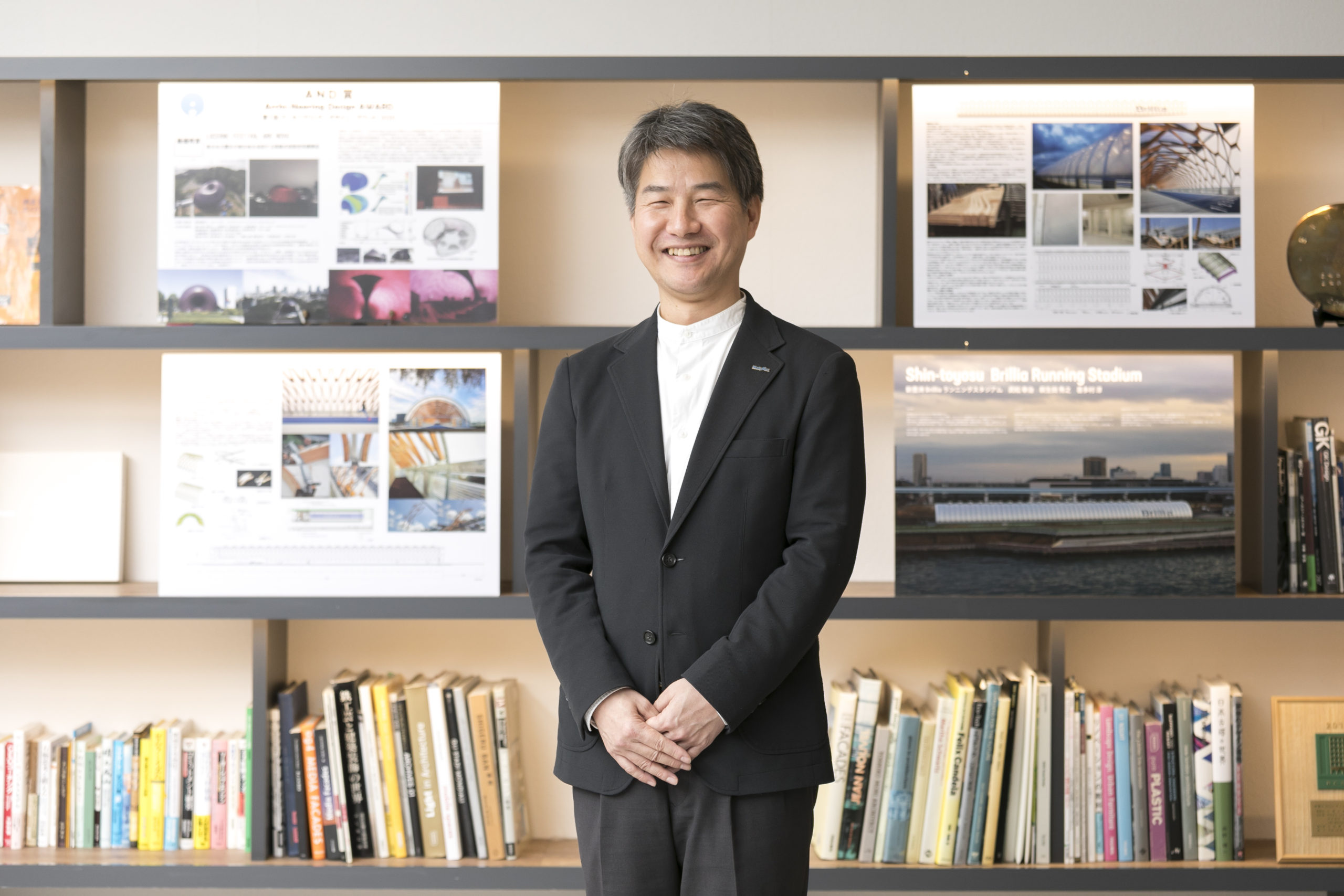
Related Articles
- TOP>
- Taiyo Kogyo Column>
- Grading of ETFE structures and large-scale relocated buildings, two themes that will open up a new era for membrane structures.






